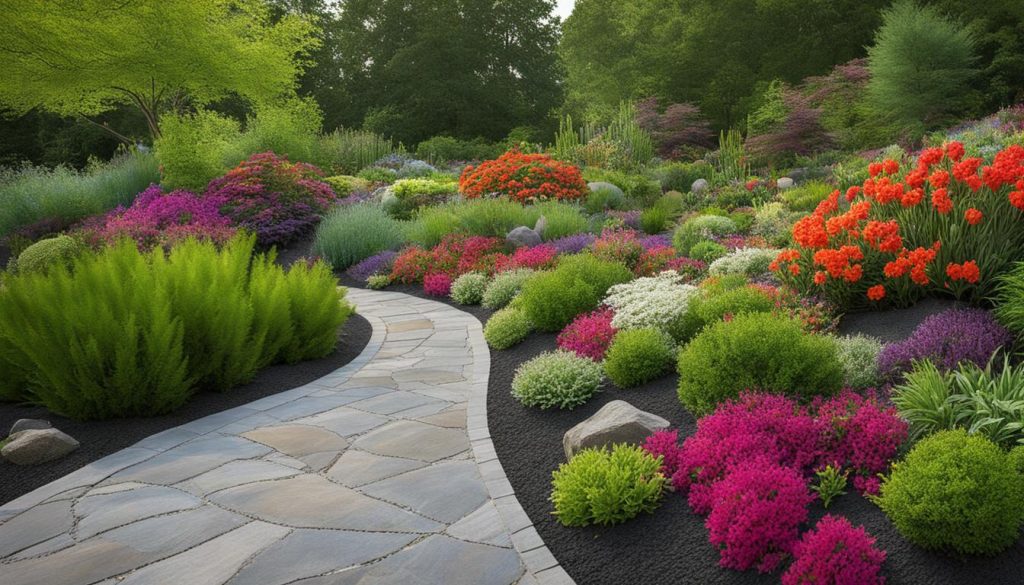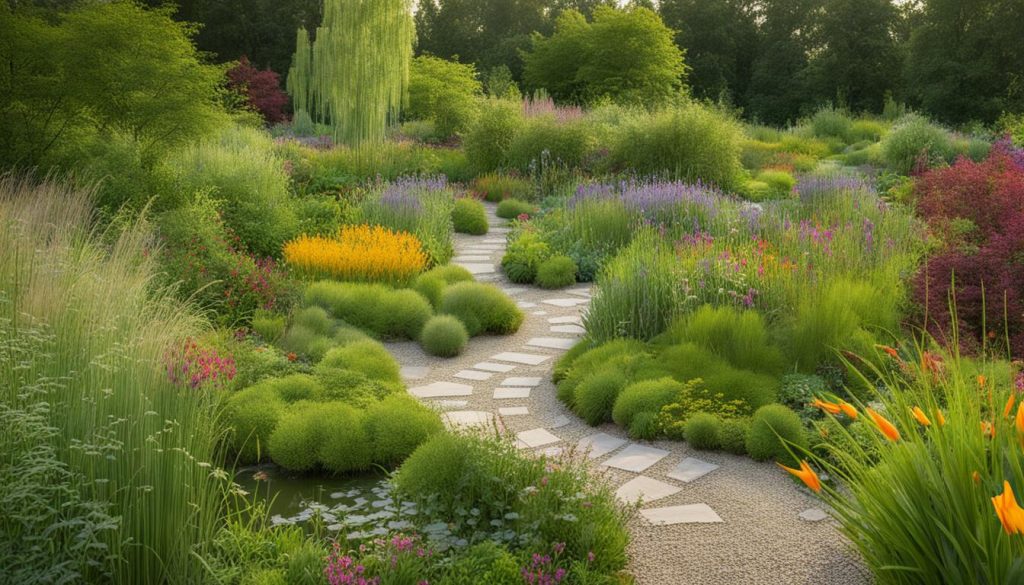Designing your outdoor space with native plants not only creates a beautiful and harmonious environment, but it also supports the local ecosystem. By using plants that are native to your region, you’re creating a natural habitat for local wildlife and helping to sustain the natural balance of your community.
Integrating native plants into your landscape design is a great way to showcase the unique beauty of your local area. From vibrant wildflowers to lush greenery, native plants add texture and depth to any garden.
Join us as we explore the benefits of native plants in landscape design and provide practical tips for incorporating them into your own outdoor space. Together, we can create a garden that is not only visually stunning but also supports the local ecology.
Benefits of Native Plants in Landscape Design
At first glance, adding native plants to your landscape design may seem like a purely aesthetic choice. However, there are numerous benefits to incorporating these plants into your outdoor space. From supporting local ecology to reducing maintenance costs, native plants have a lot to offer.
Supporting Local Ecology
Native plants are adapted to the local climate and soil conditions, making them an essential part of the local ecosystem. By incorporating native plants in your landscape design, you are creating a habitat for local wildlife, including birds, bees, and butterflies. This not only supports biodiversity but also helps to maintain a healthy ecosystem.
Low Maintenance Requirements
One of the biggest advantages of using native plants in your landscape design is their low maintenance requirements. These plants are adapted to the local climate and soil conditions, making them naturally resistant to pests and diseases. They also require less water, fertilizers, and pesticides than non-native plants, reducing your overall maintenance costs.
Contributing to Overall Beauty
Native plants are not only functional but also beautiful. With a wide variety of colors, textures, and shapes, these plants can add visual interest and dimension to your design. By using native plants, you can create a cohesive design that celebrates the natural beauty of your local environment.
Overall, incorporating native plants in your landscape design can have a positive impact on the local ecology, reduce maintenance costs, and enhance the beauty of your outdoor space. So why not consider using native plants in your next landscape design project?

Native Plants Landscape Design Tips
Designing your landscape with native plants is a smart choice for its various benefits. Here are some tips to help you incorporate them into your outdoor space:
Research the Plants Native to Your Region
Start by researching the plants that are native to your specific region in Canada. This will help you determine which plants are best suited for your landscape design and ensure that they thrive in your local climate.
Create a Cohesive Design
When incorporating native plants into your landscape design, it’s essential to create a cohesive and integrated look. To achieve this, consider factors such as plant size, color, and texture, and ensure that they complement each other well.
Use a Variety of Plants
Amp up the beauty of your landscape design by using a variety of native plants. Mix and match shrubs, trees, groundcovers, and flowers to create a dynamic and visually appealing outdoor space.
Choose Low Maintenance Plants
One of the benefits of using native plants in landscape design is their low maintenance requirements. Opt for plants that are adapted to your local climate and do not require frequent watering or fertilizing. This will save you time, effort, and money in the long run.
Consider the Sun and Soil Conditions
Before selecting which native plants to use, consider the sun and soil conditions in your outdoor space. Some plants thrive in full sun, while others prefer shade. The type of soil in your garden can also affect which plants will grow best. Keep these factors in mind when choosing which native plants to incorporate into your landscape design.
By following these tips, you can create a beautiful and sustainable landscape design using native plants that support the local ecology in Canada.
If you have any questions, our support team is always happy to help. Visit our gallery to view and appreciate the quality of our work.
FAQ
How can native plants enhance the allure of my garden?
Native plants bring a unique beauty to your garden, showcasing the natural flora of your local environment. They add texture, color, and scent, creating a visually stunning and inviting outdoor space.
How do native plants support the local ecology?
Native plants have evolved to thrive in the local environment, making them better adapted to the climate, soil conditions, and wildlife in your area. By incorporating native plants in your landscape, you provide habitat and food sources for native wildlife, contribute to biodiversity, and promote a healthier ecosystem.
Are native plants low maintenance?
Yes, native plants are typically low maintenance because they are well-suited to the local environment. Once established, they require less water, fertilizer, and pest control compared to non-native plants. Native plants have also developed natural defenses against local pests and diseases, reducing the need for chemical interventions.
Can I use native plants in any region of Canada?
While native plants are well-adapted to specific regions, there are native plant options for different parts of Canada. It’s important to select native plants that are suitable for your region’s climate, soil type, and sunlight conditions. Consult local resources, such as native plant nurseries or gardening organizations, to determine the best native plants for your specific area.
How can I create a cohesive design using native plants?
To create a cohesive design, consider factors such as color schemes, plant heights, and bloom times. Choose native plants that complement each other in terms of color and texture. Pay attention to the mature size of each plant to ensure they harmonize well within your landscape. Additionally, select native plants that bloom at different times throughout the year to maintain interest and attract pollinators.

